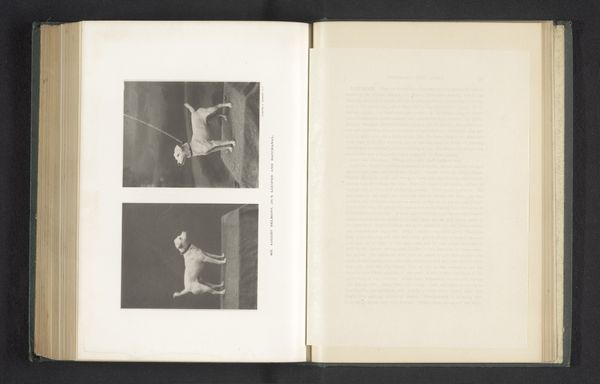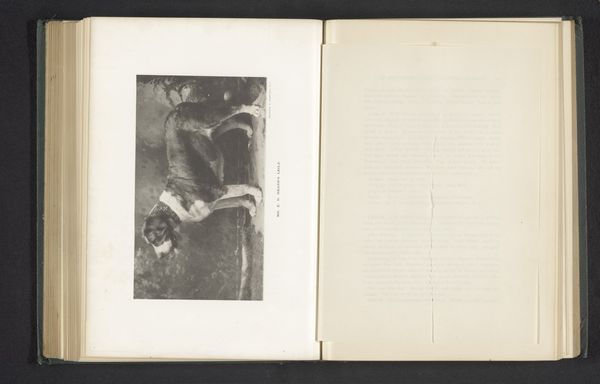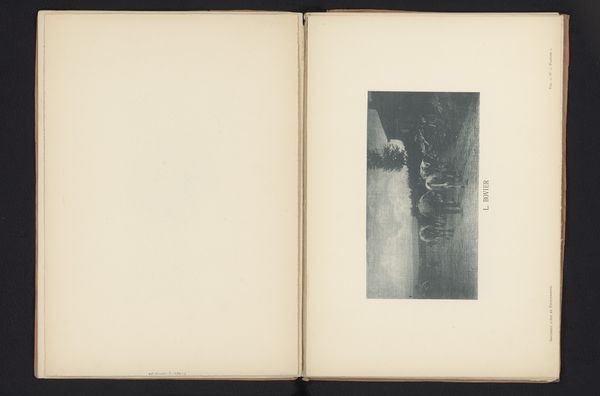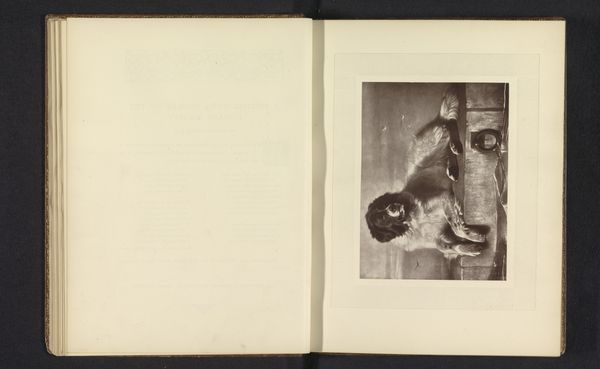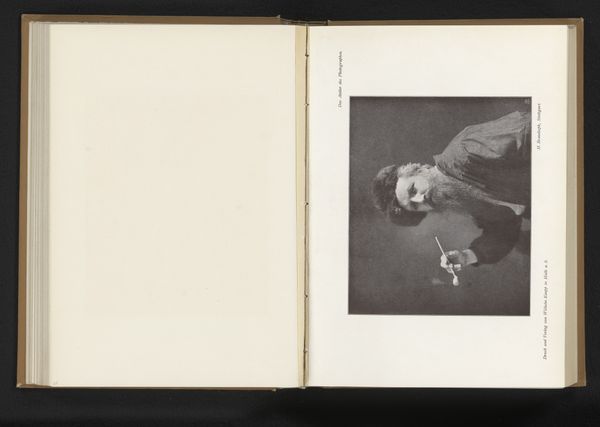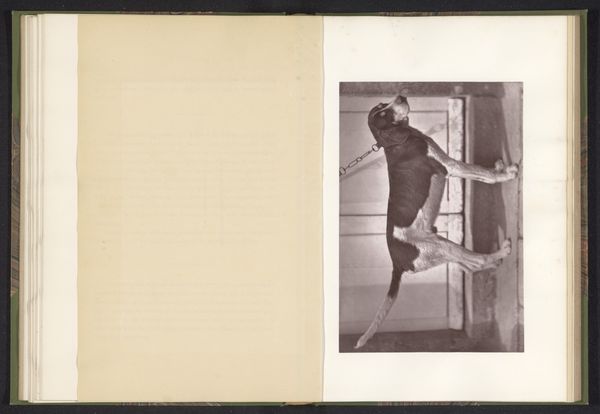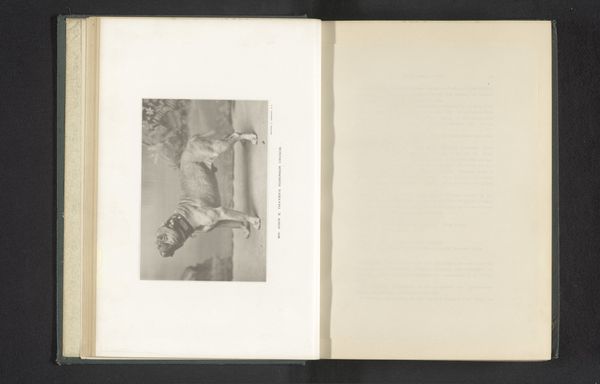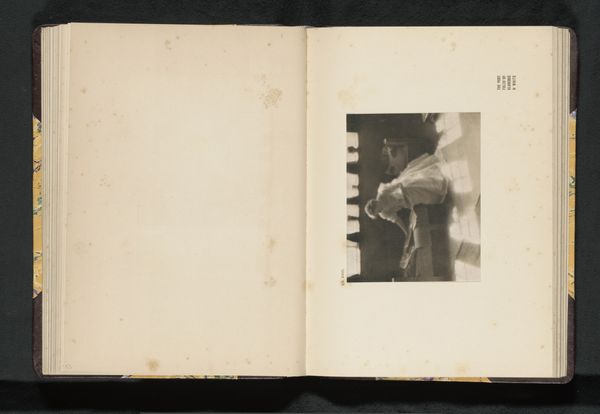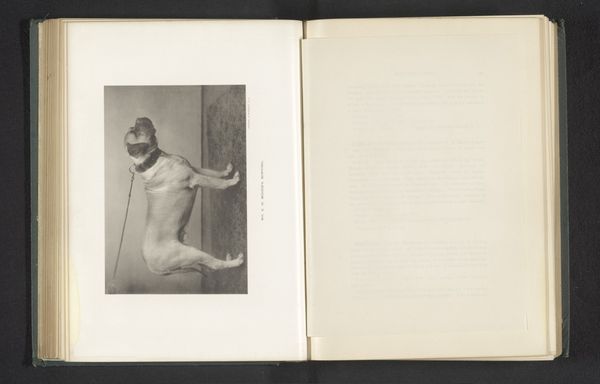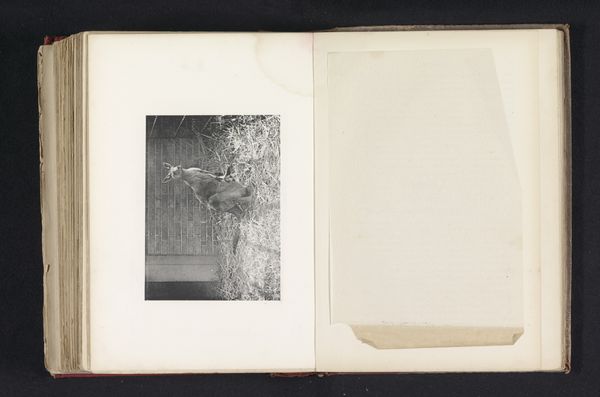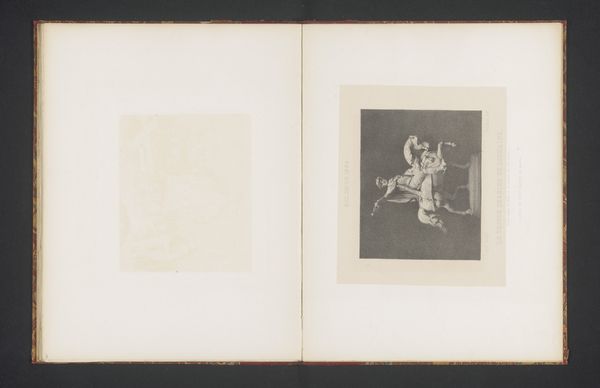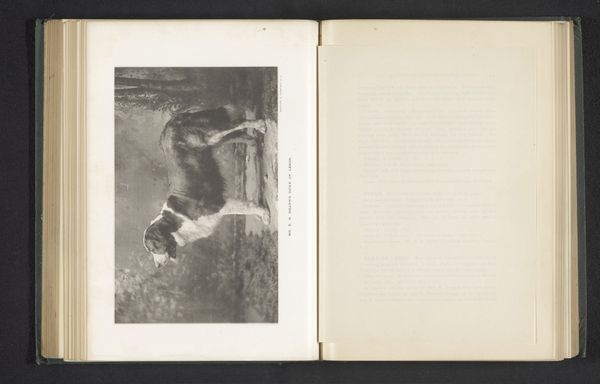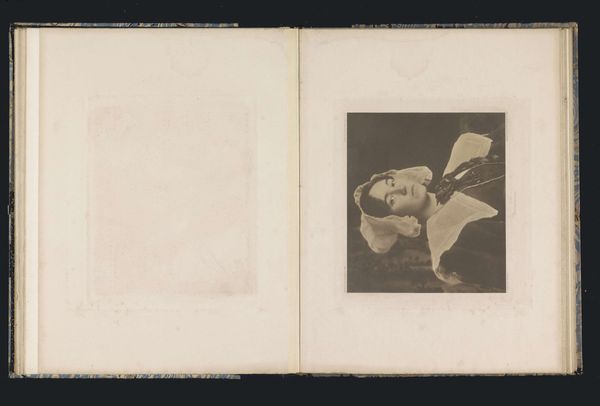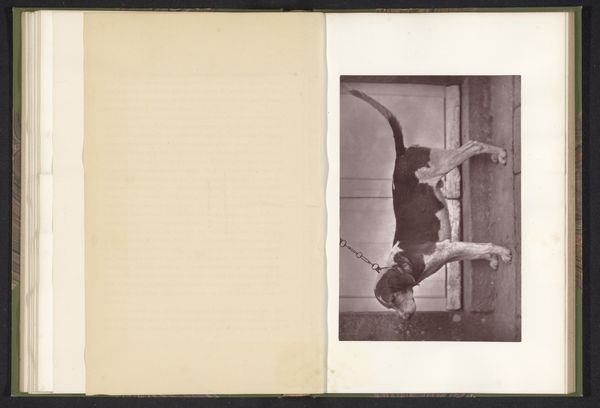
print, photography, gelatin-silver-print
#
portrait
# print
#
photography
#
gelatin-silver-print
#
realism
Dimensions: height 98 mm, width 169 mm
Copyright: Rijks Museum: Open Domain
Editor: This is a photograph entitled "Engelse Pointer," taken before 1888, using a gelatin-silver print. It's quite striking - the dog’s pose and the monochrome palette create a sense of stillness and formality. How do you interpret this work within its historical context? Curator: It’s important to consider the late 19th century. Photography was relatively new, and portraiture, usually reserved for the wealthy, was rapidly evolving. What does it mean to you that someone chose to capture a dog in this formal, almost aristocratic style? Was this purely about representation or perhaps about ideas of class, status, and human-animal relationships? Editor: I hadn't thought about the class aspect so directly. The pose is very deliberate, and printing it in a book format must mean it was relatively accessible at the time. Curator: Exactly. The widespread use of photography certainly influenced social discourse. Now, given the period, how does this image interact with existing ideas of the time about the relationship between humans, animals, and status, perhaps the romanticisation of nature? Editor: I see what you mean! Dogs were often symbols of loyalty and companionship but within certain social structures. Curator: Right. So, is this image then a simple portrayal of a dog, or is it involved in negotiating larger societal values through the visual language available at the time? How much do power relations affect visual expression even in such "simple" photographs? Editor: That is fascinating. I’ll never look at animal portraits the same way again! Curator: Indeed! Art invites us to think critically about how it reflects and shapes our perceptions of the world, yesterday and today.
Comments
No comments
Be the first to comment and join the conversation on the ultimate creative platform.
